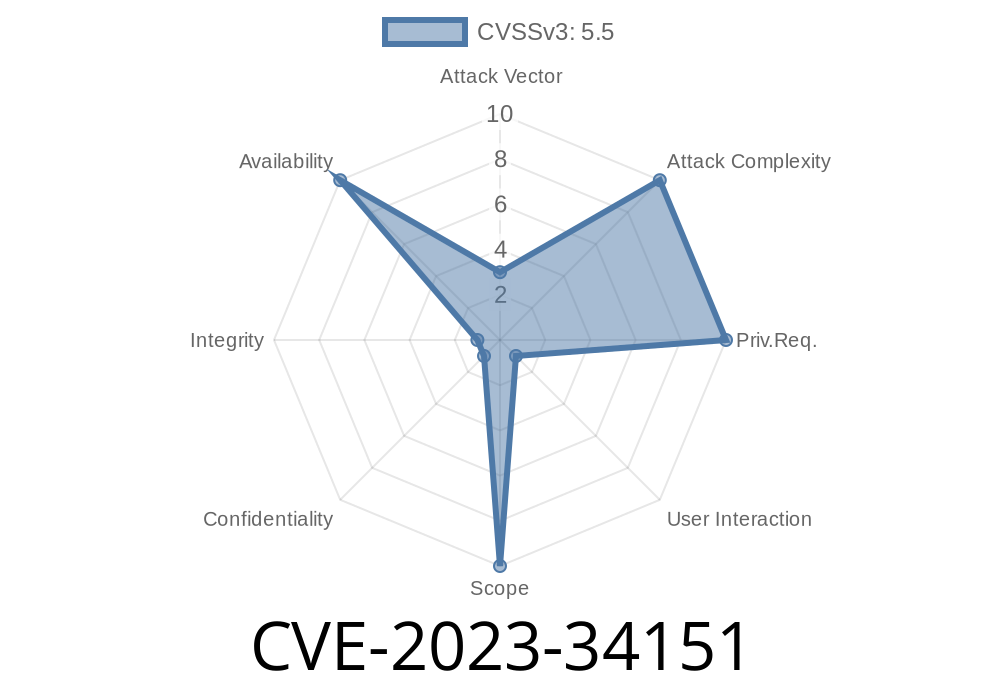In light of the recent discovery of a security vulnerability in ImageMagick, we felt it necessary to thoroughly analyze and report the findings associated with CVE-2023-34151. This post will delve into the technical details, providing code snippets, linking to original references, and discussing the specifics of the exploit in question.
Background
ImageMagick is a widely-used open-source software suite for displaying, converting, and editing image files. Given its popularity, any security flaw uncovered within the suite has the potential for widespread negative impact.
The Vulnerability - CVE-2023-34151
The critical security vulnerability identified in ImageMagick is a result of an undefined behavior when casting a double to size_t in SVG, MVG, and other file format coders. This issue is a recurring bug that was previously identified as CVE-2022-32546.
The undefined behavior arises when a type casting from double to size_t does not produce the intended value during the parsing of the image file. This can lead to buffer overflows, memory corruption, or other unexpected behavior - all of which can be exploited by an attacker with malicious intent.
Code Snippet
Here is a sample code snippet showcasing the vulnerability in the SVG coder (similar instances can be found in MVG and other coders as well):
ssize_t
ReadSVGImage (...)
{
...
while (...)
{
...
if (LocaleCompare((const char *) keyword,"width") == )
{
svg_info.width=StringToDouble(attribute, (char **) NULL);
if (svg_info.width < 1)
svg_info.width *= (double) image->columns;
// Vulnerable casting
width=(size_t) svg_info.width;
...
}
...
}
...
}
The problematic type casting can be seen in the line
width=(size_t) svg_info.width;
CVE-2023-34151 was first publicly disclosed on the following platforms
1. MITRE - CVE-2023-34151
2. NIST National Vulnerability Database - CVE-2023-34151
Exploit Details
An attacker can potentially exploit this vulnerability by crafting a malicious image file (in SVG, MVG, or other affected formats) that causes the type casting to produce unintended values. This can lead to buffer overflows, memory corruption, or other issues that allow the attacker to execute arbitrary code, cause a denial of service, or access sensitive information.
A successful exploit could result in the attacker gaining unauthorized access to an affected system, potentially compromising sensitive data and causing widespread damage. Due to the severity of this vulnerability, it is crucial for users of ImageMagick and developers who incorporate the software into their applications to promptly update to the latest version, which contains patches addressing this issue.
Conclusion
CVE-2023-34151 demonstrates the importance of not only identifying security vulnerabilities but also addressing recurring bugs effectively. The identified vulnerability in ImageMagick could have severe consequences if exploited successfully, so it's essential for users and developers to update their software to mitigate any potential risks. We hope that this post has provided valuable insights into the technical details surrounding this vulnerability, helping to raise awareness and encourage prompt action to protect against potential exploitation.
Timeline
Published on: 05/30/2023 22:15:00 UTC
Last modified on: 06/07/2023 13:57:00 UTC
